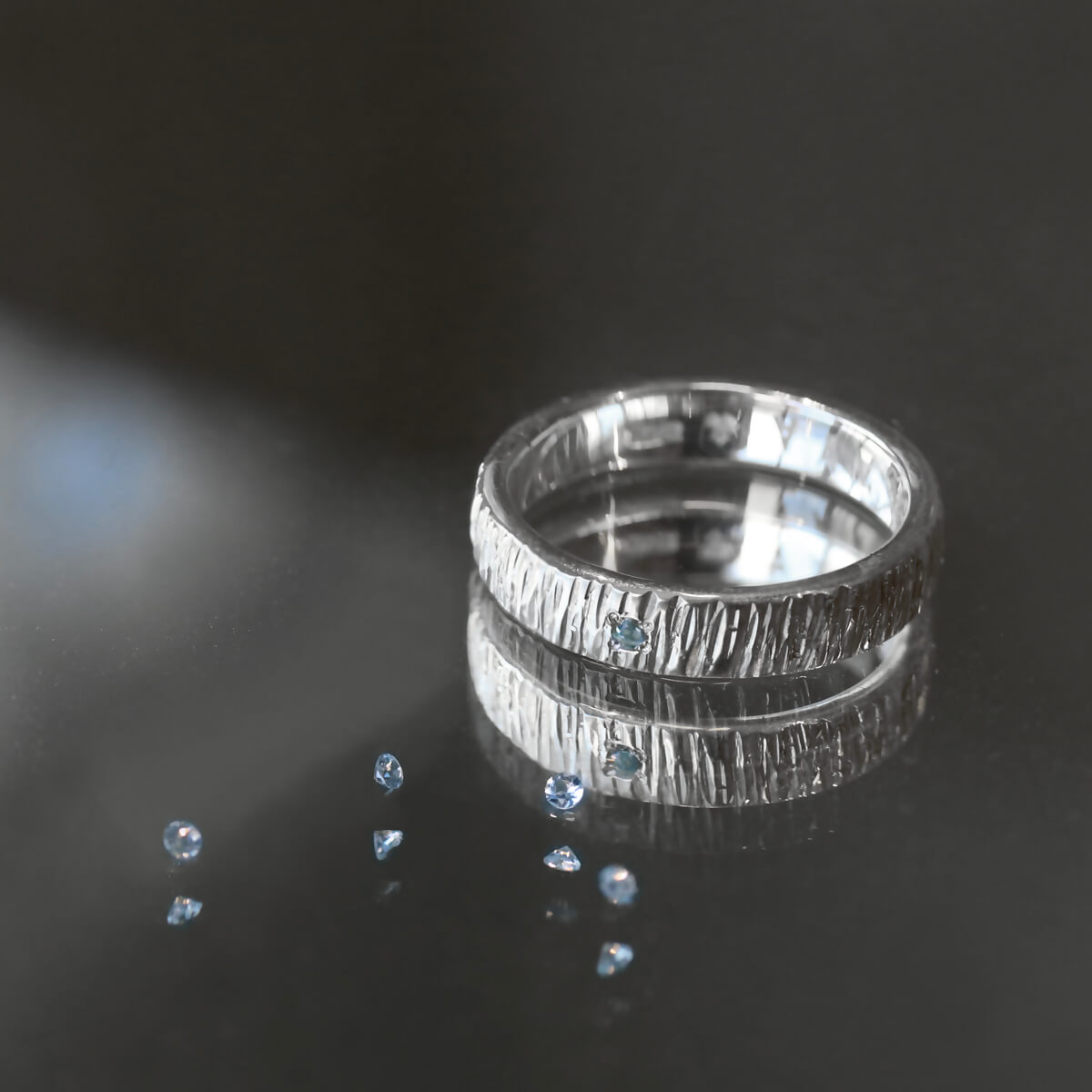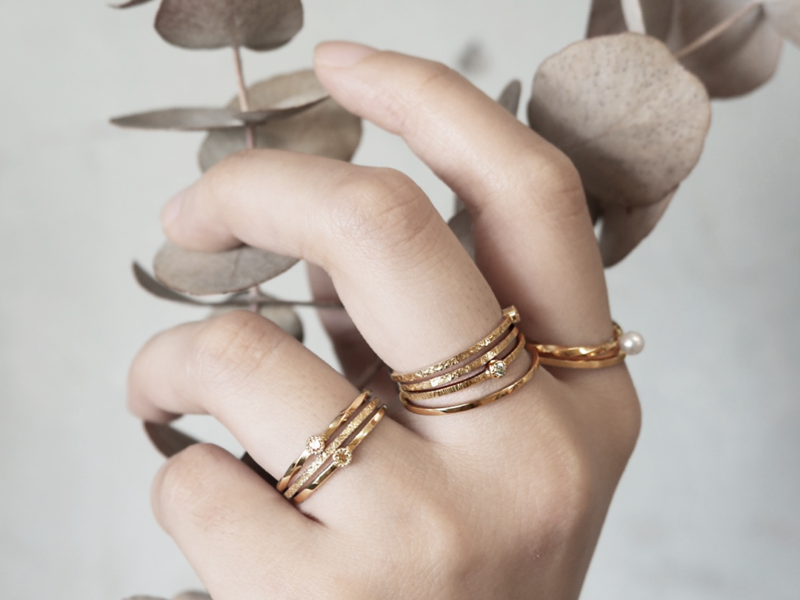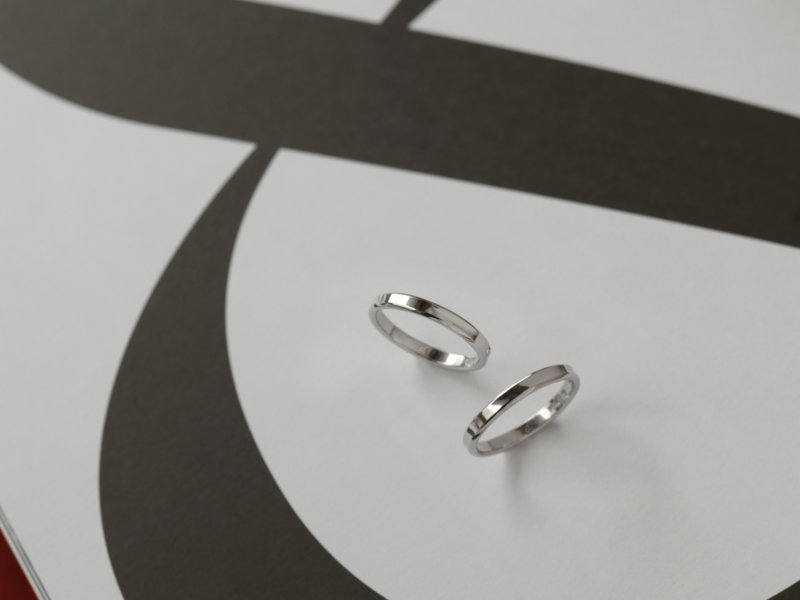Tanzanite, birthstone of December
I would like to talk about the birthstone for December, tanzanite.
Tanzanite, a gemstone with attractive colors
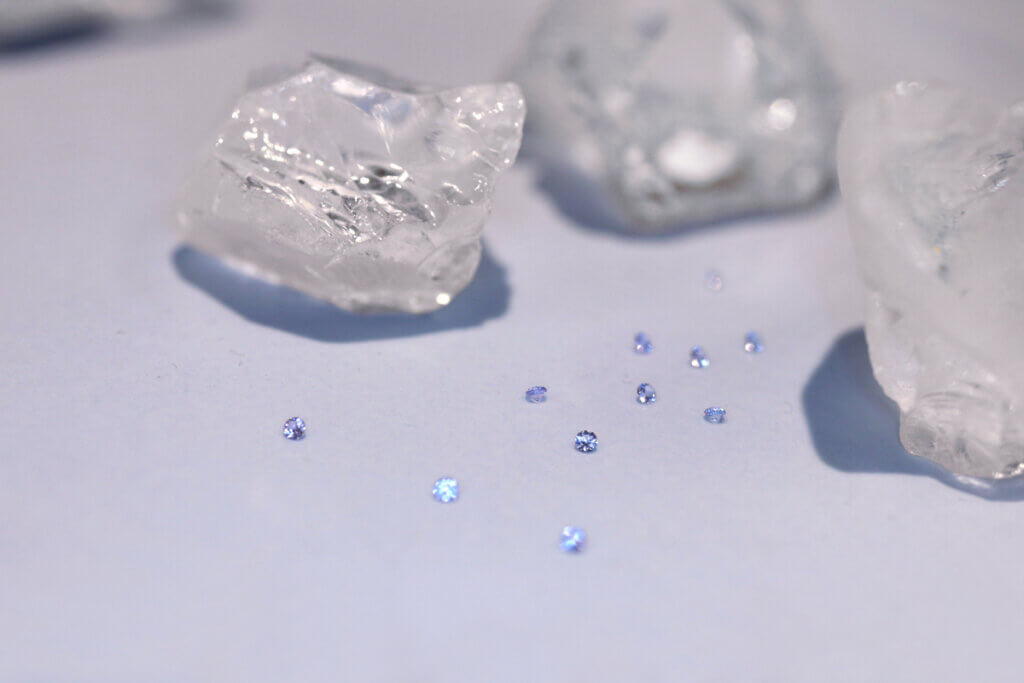
Tanzanite is the birthstone for December, the same as turquoise, lapis lazuli, and blue zircon.
The Japanese name for this stone is "kaolinseki" or "bluestone." It has a Mohs hardness of 6 to 7 and has a tendency to crack easily, despite its hardness.
It is a new stone that has been discovered as a gemstone within the last 100 years and has quickly become a popular gemstone because of its beautiful color.
Tanzanite is also the gemstone of the 24th wedding anniversary.
The name Tanzanite comes from the Merelani Mine (Merelani Hills) in northern Tanzania, where it is produced, and was named by Tiffany & Co. The name is said to have come from its resemblance to the beautiful Tanzanian sky during the magic hour, also known as the dusk to nighttime hours.
The two major typical colors are blue to purplish blue, blue-purple, and red-purple with a bluish tinge. It is also often referred to as indigo or violet color. Tanzanite, which is generally considered to be of high quality, has a strong color and high transparency.
Like other colored gemstones, dark and vividly colored tanzanites are very popular and also very expensive. Gentle shades are more affordable than their brightly colored counterparts, but they have a soft charm that darker stones do not have.
Tanzanite's greatest appeal lies in its strong polychromaticity. Polychromaticity is the property of a gemstone to show different colors when viewed from different crystalline directions. When the gemstone is tilted to the light, the cut surface reflects shimmering deep blue, reddish purple, and yellowish green colors. This characteristic gives the stone a unique character and charm that is not found in other stones.
Tanzanite as a mineral
I would like to go into a little more detail about the tanzanite stone.
The mineral name for tanzanite is "zoisite.
Zoisite is said to be named after the Slovenian mineral collector Zygmunt Zois; it was discovered in Austria in 1805, but only relatively recently has it been marketed as a gemstone.
Only zoisite mined in mines in Tanzania is named "tanzanite" as a trade name. However, in recent years, demand for zoisite has increased dramatically due to its popularity, and some mines have been depleted, so the perception that blue zoisite = tanzanite is gaining ground. Zoisite is also mined in Italy, Austria, Spain, Germany, Scotland, and many other countries, but blue zoisite from Tanzania is the most authentic tanzanite.
When brown zoisite is heat-treated, it turns blue, making natural, unheated, beautiful blue tanzanite very rare. Therefore, most of the blue tanzanites on the market are heat-treated.
Among zoisites, those containing manganese are almost opaque pink to red in color and are marketed under the trade name "tulite.
Tanzanite, a gemstone that became instantly famous overnight
Tanzanite is relatively new among colored gemstones.
The first discoverers were Maasai tribesmen who, in 1967, accidentally discovered a mass of dark blue crystals in the soil of the Mererani mine in northern Tanzania. They initially thought they had discovered a sapphire mine, but upon closer examination, they discovered that the stone was zoisite.
Tiffany & Company noticed this little-known but very beautiful stone and named it tanzanite after the country that produced it, and began selling it in 1968. Almost overnight, tanzanite became the world's most popular gemstone and one of the most sought-after colored gemstones in the world.
It is also said that the size of the mined stones was larger than the scarce colored stones of the time, and the distribution of boldly cut stones was also a factor in their popularity.
The cut determines the attractiveness of tanzanite.
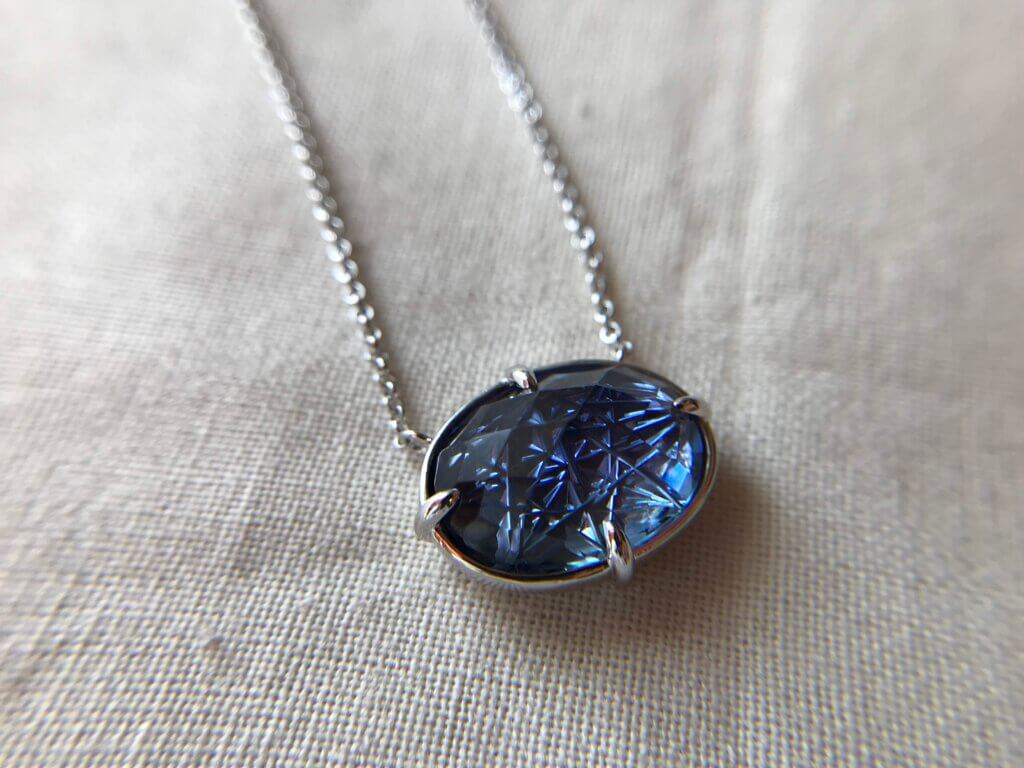
While the gemstone's inherent attractiveness is of course important, a good understanding of tanzanite's characteristics is necessary to fully appreciate its appeal. As is the case with other gemstones, ores are gifts created by nature, so each one has its own unique color and inclusions (inclusions), even if they are of the same type. Cutters who cut ores into gemstones need to assess these differences and cut them into the most attractive angles and shapes.
Tanzanite is one of those gemstones whose appearance changes dramatically depending on how it is cut.
Tanzanite gemstone appearance is greatly influenced by its polychromatic nature.
When tilted to the light, the cut surface reflects sparkling dark blue, reddish violet and yellowish green. Most tanzanite is now heat-treated to reduce the yellowish green and brownish areas that cause color irregularities, so the blue and violet colors are stronger.
Tanzanite, like sapphire, is said to be determined by the direction from which the cutter cuts it, which determines whether the color intensity is strong or not. When any tanzanite is tilted to the light, it shows a beautiful blue and purple flicker in accordance with the cut surface. It is no exaggeration to say that the cutter determines the way it shines.
Tanzanite is a newer gemstone with a shorter history than emeralds, rubies, and sapphires, so it is not a traditional color stone. However, it is a stone with a strong appeal that is as strong as those gems.
Tanzanite jewelry can be made at MITUBACI workshops
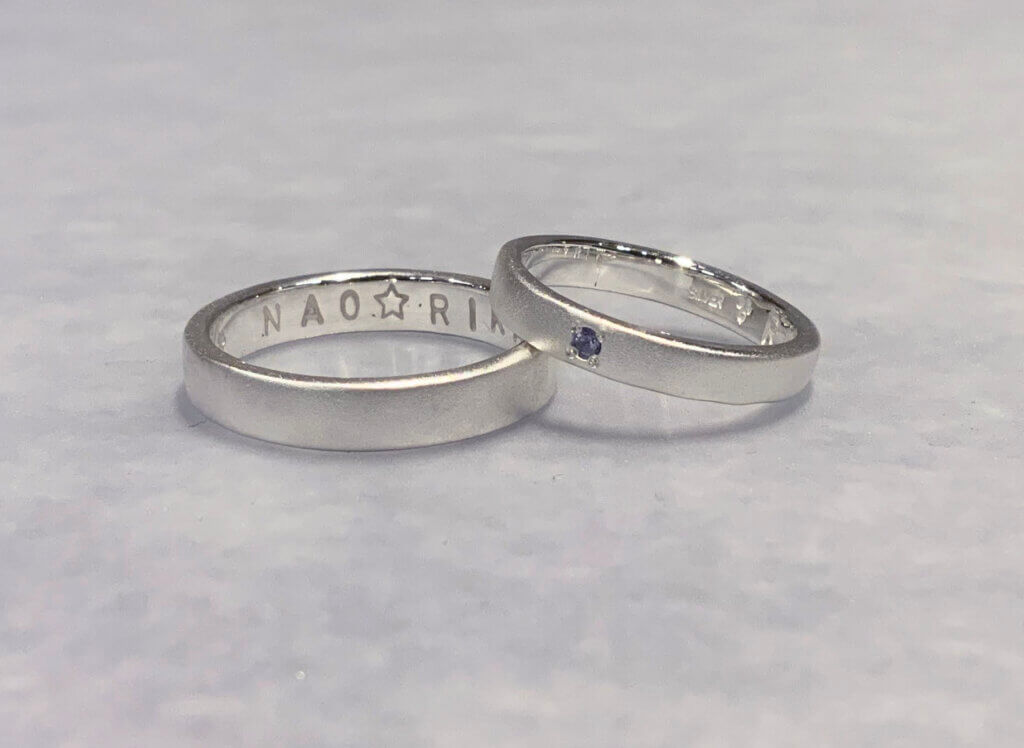
At MITUBACI, such tanzanite can be fastened to rings, pendants, bangles, and necktie pins made in the workshop, and the layered rings made of K18 champagne gold have a slim yet elegant and gentle finish that is easy to wear to the office or for everyday use! The ring is made of K18 champagne gold.
Other birthstone rings are carefully crafted by our artisans. This ring uses a large stone that allows you to strongly appreciate the beauty of what we call the Tanzanian night. It is an eye-catching volume recommended as a gift. The deep blue and purple glow that matches the name of the stone will reflect the light outside and show various faces.
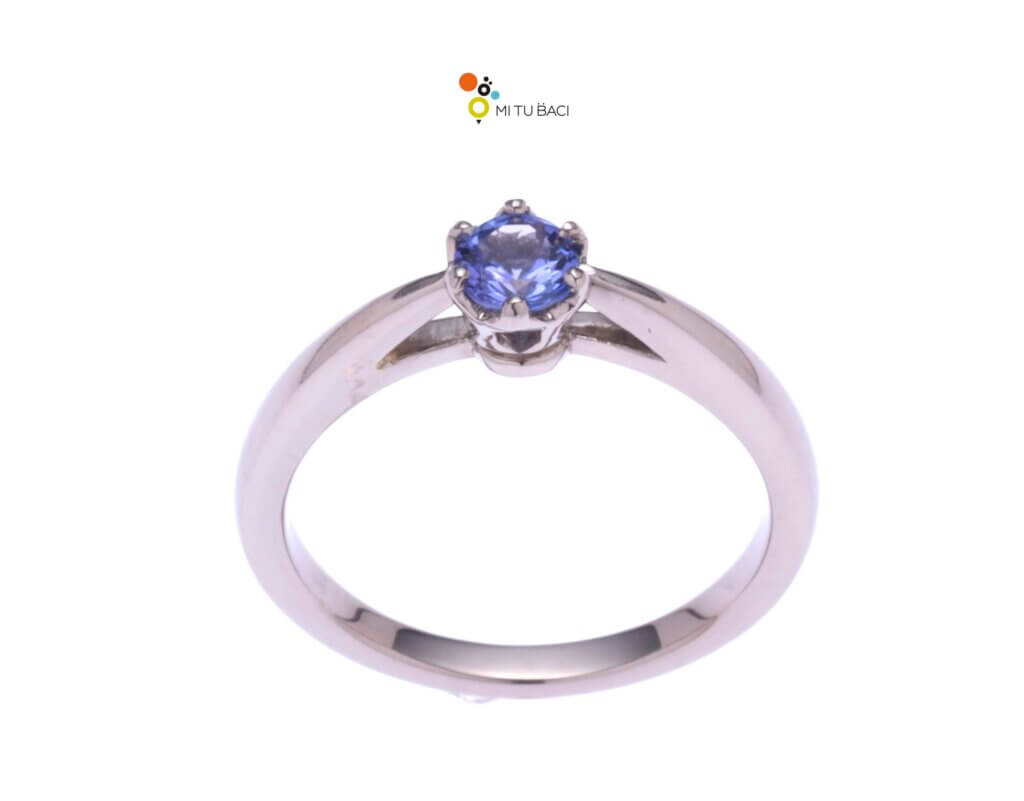
At MITUBACI, our craftsmen carefully mount each piece of tanzanite after observing and judging the condition of the tanzanite with their own eyes.
Please visit us if you are interested. Our entire staff is waiting for you!
